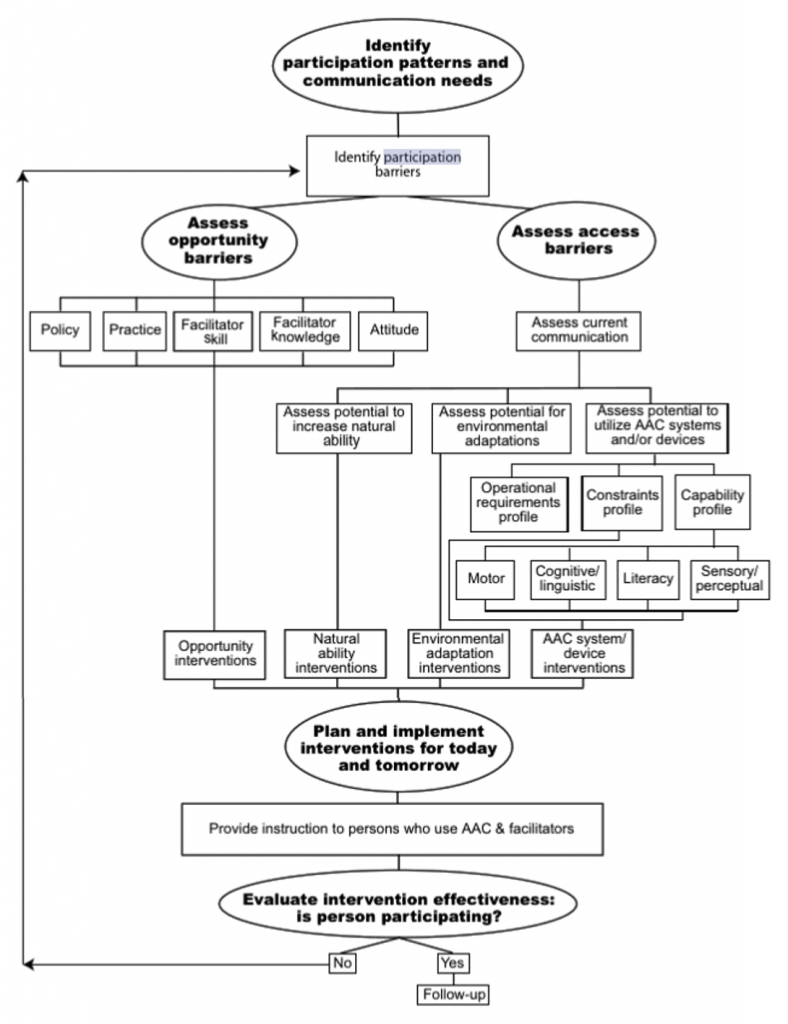The Participation Model
Over the last couple of decades there has been a shift from candidacy or deficit-based models that focus on disability, to difference and participation-focused models (Beukelman & Mirenda, 2014; Graham, et al., 2020).
This aligns with the shift from the medical model, or viewing disability as an illness that needs treatment, to a strengths-based model, or viewing people with disabilities as individuals with unique needs and strengths.
- The medical model defines disability as resulting from the individual’s physical or mental access barriers, without considering the way disability interacts with the environment (McCollow, Shurr, & Jasper, 2015).
- Strengths-based models define disability as resulting from barriers in the environment, including social and attitudinal barriers, that reduces an individual’s ability to fully participate.
The participation model was first developed by Beukelman and Mirenda in 1988 as a means of systematically implementing AAC assessments, and has since been further developed (Beukelman & Mirenda, 2014).
- Although this model was designed to be used while conducting AAC assessments, it offers a useful lens for how educators of students with OI should be conducting all assessments, as well as progress monitoring.
The participation model focuses on assessment as a dynamic process that needs revisiting as students learn new skills or as their disability progresses, in other words, whenever there are changes in participation levels.
Assessment is further broken up into four stages:
1) Identifying whether or not the student has complex communication needs;
2) Assessment that considers both access and opportunity barriers that are impacting participation;
3) Plan the scope and sequence of intervention; and
4) Monitor progress in terms of how students are participating in their environments (Beukelman & Mirenda, 2014).

Students with severe OI, who often also have complex communication needs, should be assessed, instructed, and progress monitored using a similar dynamic process, as levels of participation by these students fluctuates over time..
- Over time participation fluctuates with these students as they either learn additional skills to increase their participation, or as their disability progresses and their participation drops (Wilcox & Woods, 2011).
As students with OI are also prone to access and opportunity barriers, it is also appropriate to consider the ways that these factors are affecting participation when assessing their level of participation, and when planning the scope and sequence of intervention.
